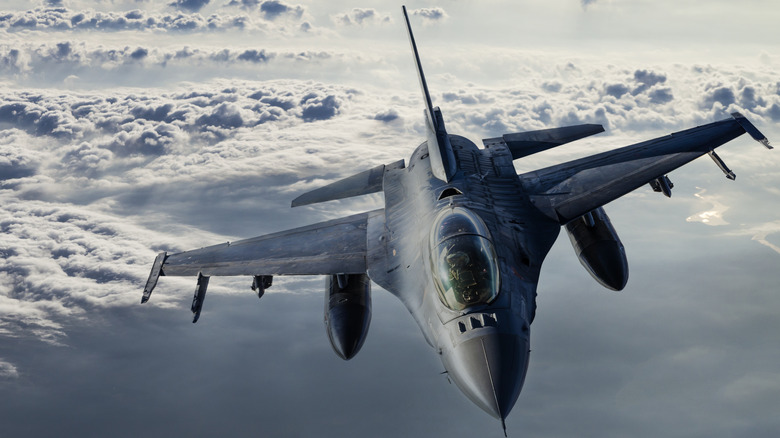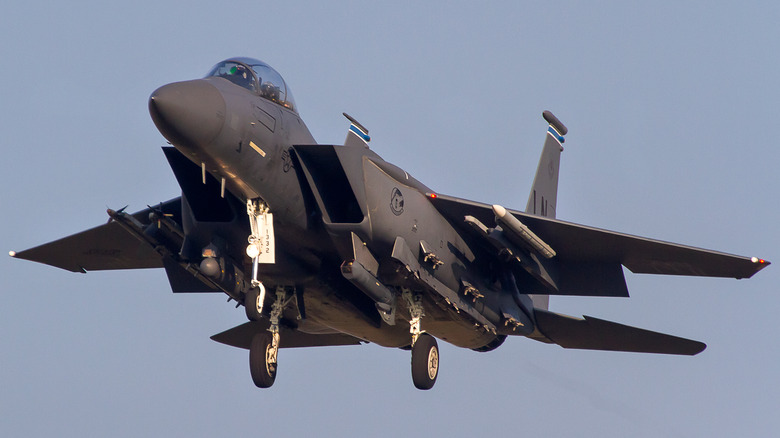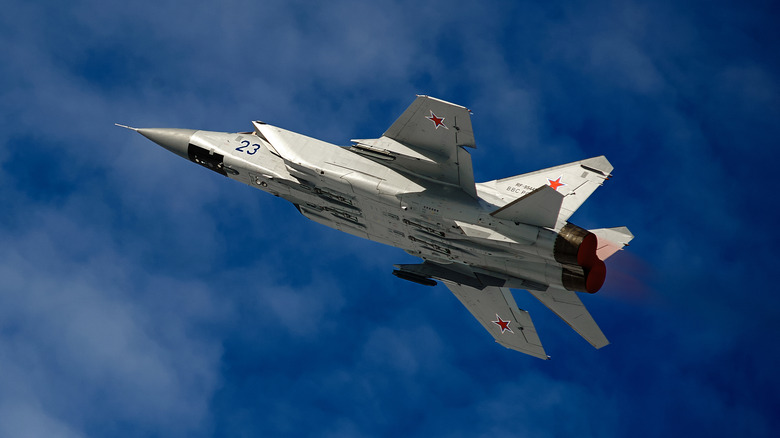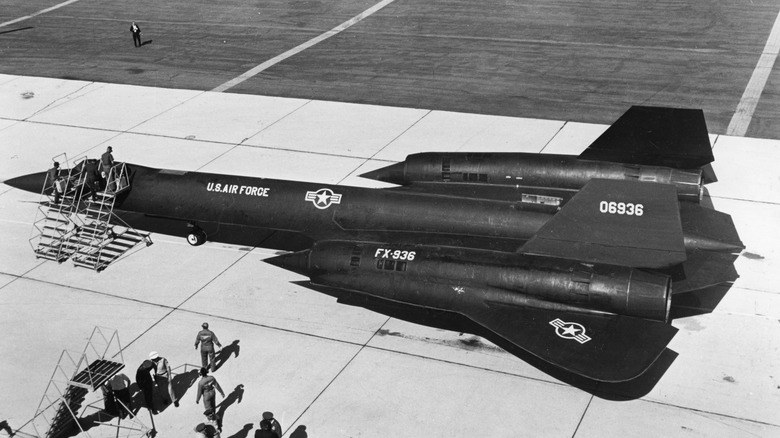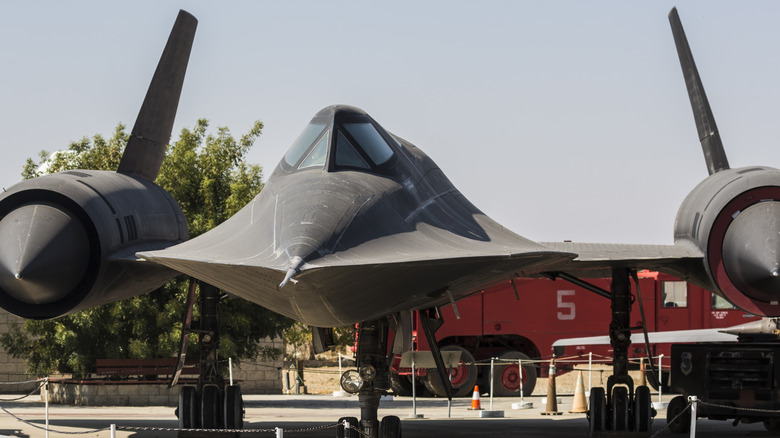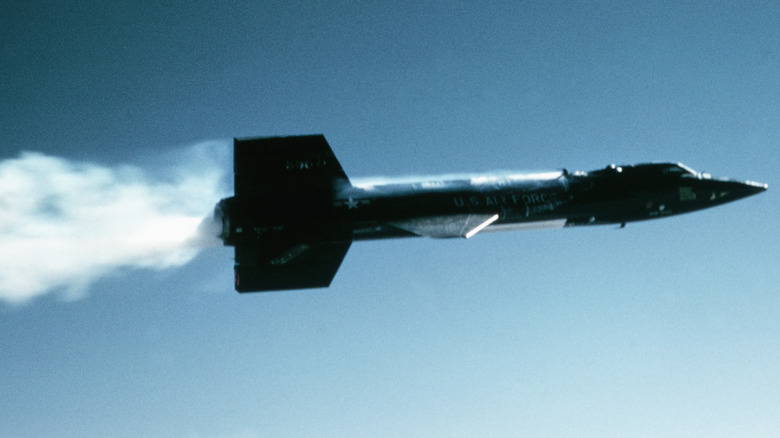The 5 Fastest Jets Ever Recorded, Ranked
Fighter jets are some of the fastest vehicles known to man, and through necessity, have evolved significantly over the years. Maybe you've seen them flying across the sky where you live, or have been to a Blue Angels or similar air show, or have simply seen movies like "Top Gun."
They can accelerate at insane speeds and even make people pass out from the G-forces. What's crazy is that the fastest jets of all time were from decades ago during the Cold War, when the American and Soviet governments were battling at just about anything (besides dropping bombs) to show which side was superior.
There are certainly fast jets these days as well, but there was something about that Cold War competition that really brought the engineers into the room to see who could do it better. You might wonder why there aren't new jets from today that can beat these old-timers.
The answer is that studies have shown fighter jets don't need that much speed in air combat. The point is, the planes you'll see in this list are from an earlier era, not because we don't have the technology to do it now, but because there simply is no need.
McDonnell Douglas F-15 Eagle
The McDonnell Douglas F-15 Eagle was a jet first designed to keep up with the Soviet military. The Soviets had just announced the MiG 25 in 1967, and the American military needed something that could keep up with and hopefully handle the MiG 25 when necessary. Deployed in 1976 (one year after the MiG 25), the F-15 highly resembled the F-14 Tomcat, the same plane used in the movie "Top Gun." Flat out, base models of the F-15 could reach speeds of up to approximately 1,800 mph.
The F-15 Eagle was designed to capture and maintain air supremacy over whatever any enemy could throw at it, and it is still flying in the U.S. Air Force today. The Eagle has received several upgrades over the years, but featured various armaments throughout its history: including sidewinder missiles, other short and medium-ranged air-to-air missiles, electronic countermeasures (meant to throw off incoming attacks), and a heads-up display that could show extensive map details in the dead of night.
Mikoyan MiG 31 Foxhound
The MiG 31 Foxhound was built by the Russians as an upgrade to the already blazingly-fast MiG 25. It's a two-seater aircraft with the pilot in the front and a weapons system operator in the back, and it has the capability to fly at supersonic speeds at lower altitudes than the MiG 25. The body is highly aerodynamic with two turbofan shaft engines that can get it up to 1,860 mph. Production for the MiG 31 began in 1977, but it wasn't in regular rotation until 1982.
The MiG 31 cockpit comes standard with liquid crystal displays to show all the instrument readings and radar information. Its armaments include four long range, four short range, and two medium range air-to-air missiles. It can also be outfitted with various air-to-ground missiles. It has Zaslon phased array radar that can track four targets simultaneously regardless of their maneuvers or countermeasures as long as they are within the vicinity.
Lockheed YF-12
The Lockheed YF-12 was first released in the 1960s and quickly shattered every fighter jet speed record that came before it. It was an interceptor prototype that quickly gained the "highest speed" record at 2,070 mph and the "highest altitude" record at 80,257 feet. This meant it could climb quickly to high altitudes in order to intercept Soviet bombers.
Unfortunately, in the late 60s, the United States and the Air Force were gearing up for a war in Vietnam. With little need for a high-speed interceptor over southeast Asia, any plan of bringing it to production was scrapped. Though it clearly was a success early on, only three prototypes were ever made.
One crash-landed after the pilots ejected in an emergency, and another was mostly damaged because of a landing mishap that virtually "totaled" the aircraft. As a result, there is only one YF-12 left, and it sits on display at the National Museum of the United States Air Force.
Lockheed SR-71 Blackbird
The Lockheed SR71 Blackbird was based on the design of the YF-12, another extremely fast jet from Lockheed in that era. It was produced in the late '60s when the Cold War was ramping up, and the United States needed an aircraft that could perform reconnaissance at extremely high altitudes.
Another requirement for its design was that it was impossible to hit by enemy fighters or surface-to-air missiles. Enter the SR-71 Blackbird, which could reach speeds above Mach 3 (over 2,300mph), at over 70,000 feet.
This reconnaissance jet was so fast that it had to be built with titanium to keep the heat levels down. Air would get trapped in front of the jet causing the hull to heat up, and any other material would have broken down. The other challenge of the Blackbird was that it had to avoid Soviet radar.
This led to engineers devising ways to keep it "radar resistant" through careful placement of the engines, a design that was extremely low profile, and paint that was invented to absorb radar signals. What resulted is a low-profile appearance that, when scanned by radar in the skies, the Blackbird would only be picked up as a vague object smaller than a human, but larger than a bird.
NASA/USAF X-15
The X-15 is in a class on its own as the hypersonic rocket plane prototype that beat the rest of the aircraft before (and after) it handily. It looked like a rocket, including the large wedged tailfin that produced significant drag at low altitude. As a result, for its speed tests, it was attached to the underside of a B-52 bomber wing which would bring the aircraft up to an altitude of 14,000 feet before it detached and fired up its own engines.
How fast was it? The X-15 could go 4,520 mph, or 6.7 times the speed of sound. That's just under twice as fast as its closest competitor — the Lockeed SR-71 Blackbird. The X-15 was so fast that it didn't use traditional modes of steering (using wind drag over a fin), and instead turned from the use of rocket thrusters.
Not only did the U.S. Air Force break the manned aircraft speed record that is still held today with this jet, they also broke the altitude record (not counting spacecraft) by flying above 85,000 feet. There were only three X-15s ever made.
